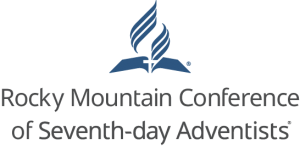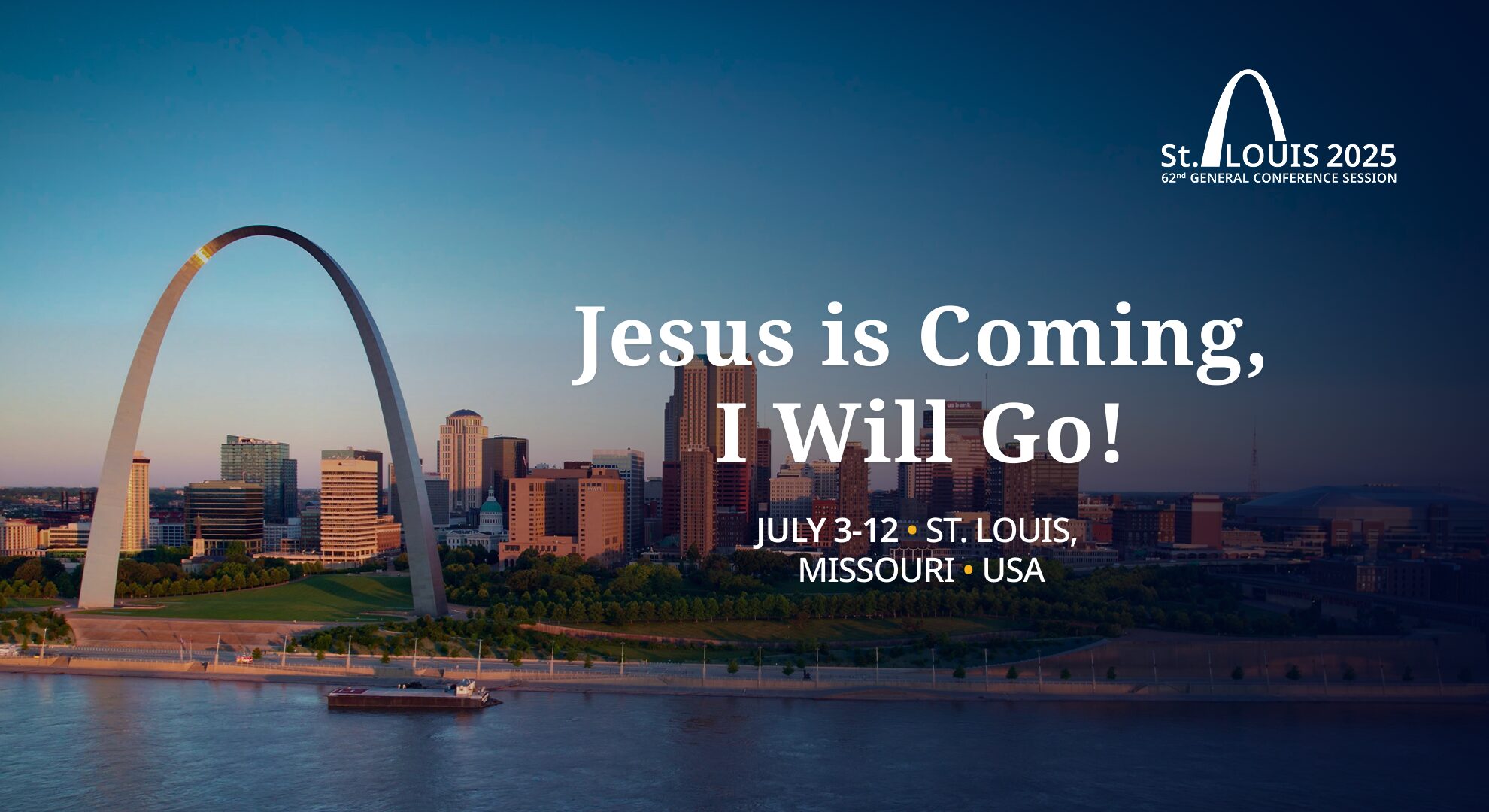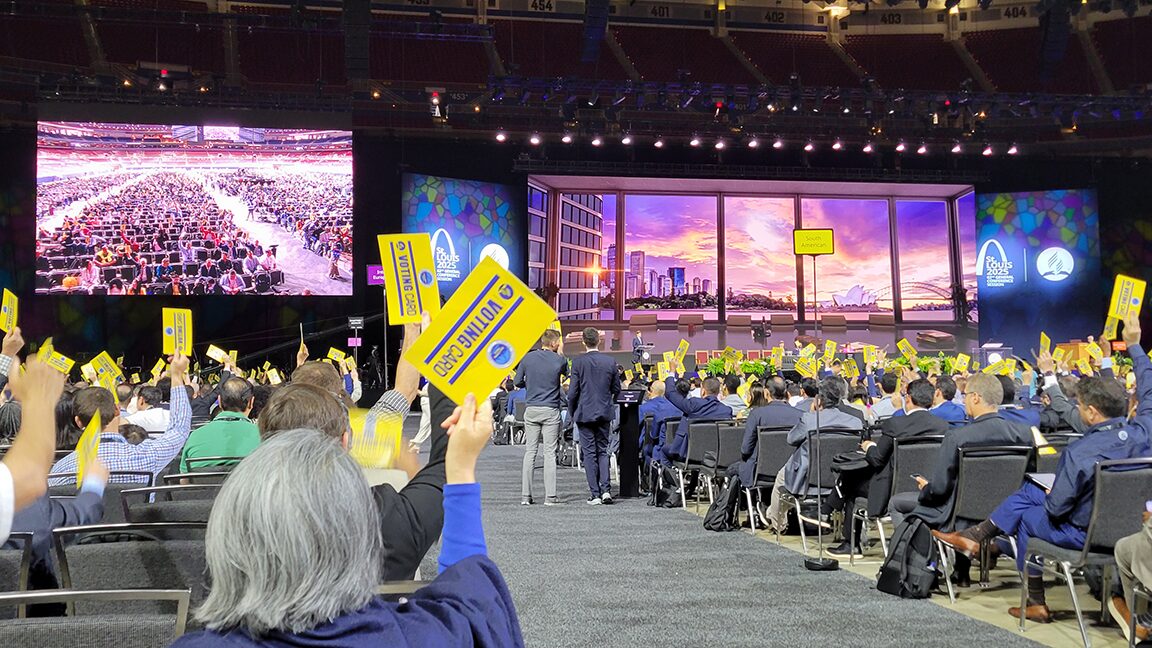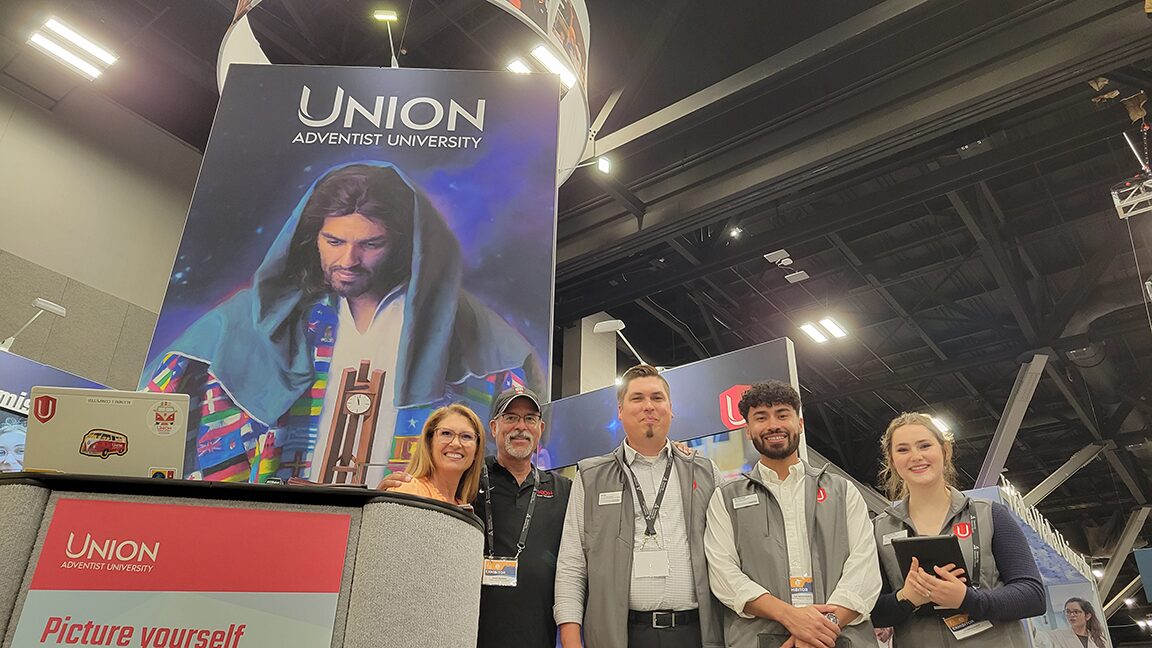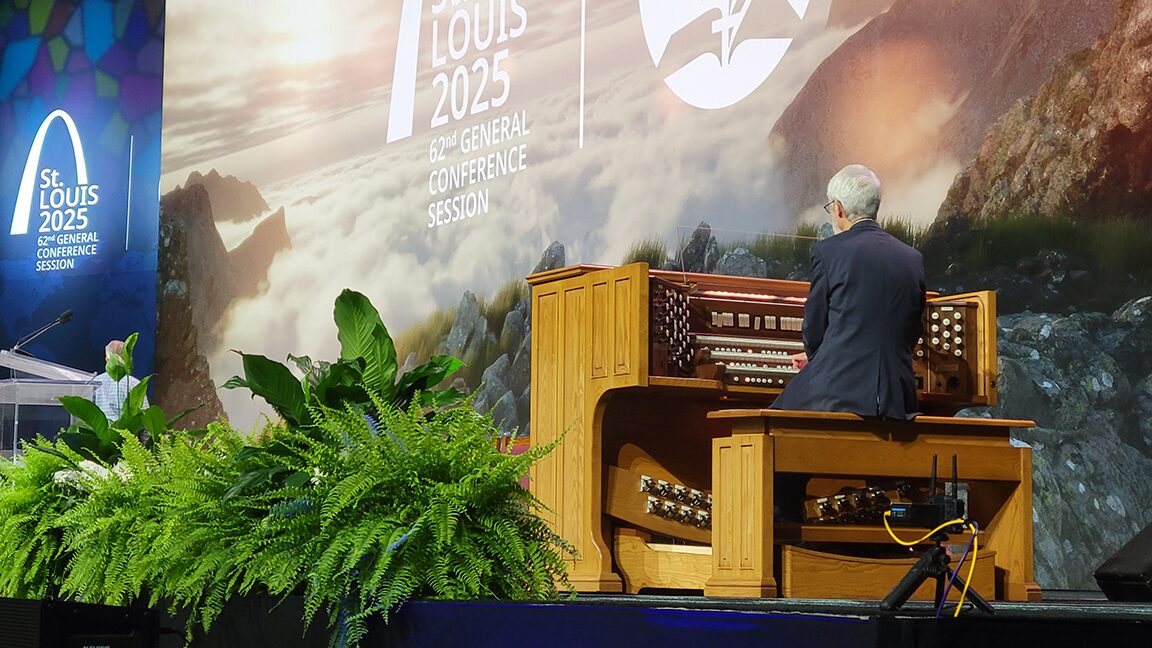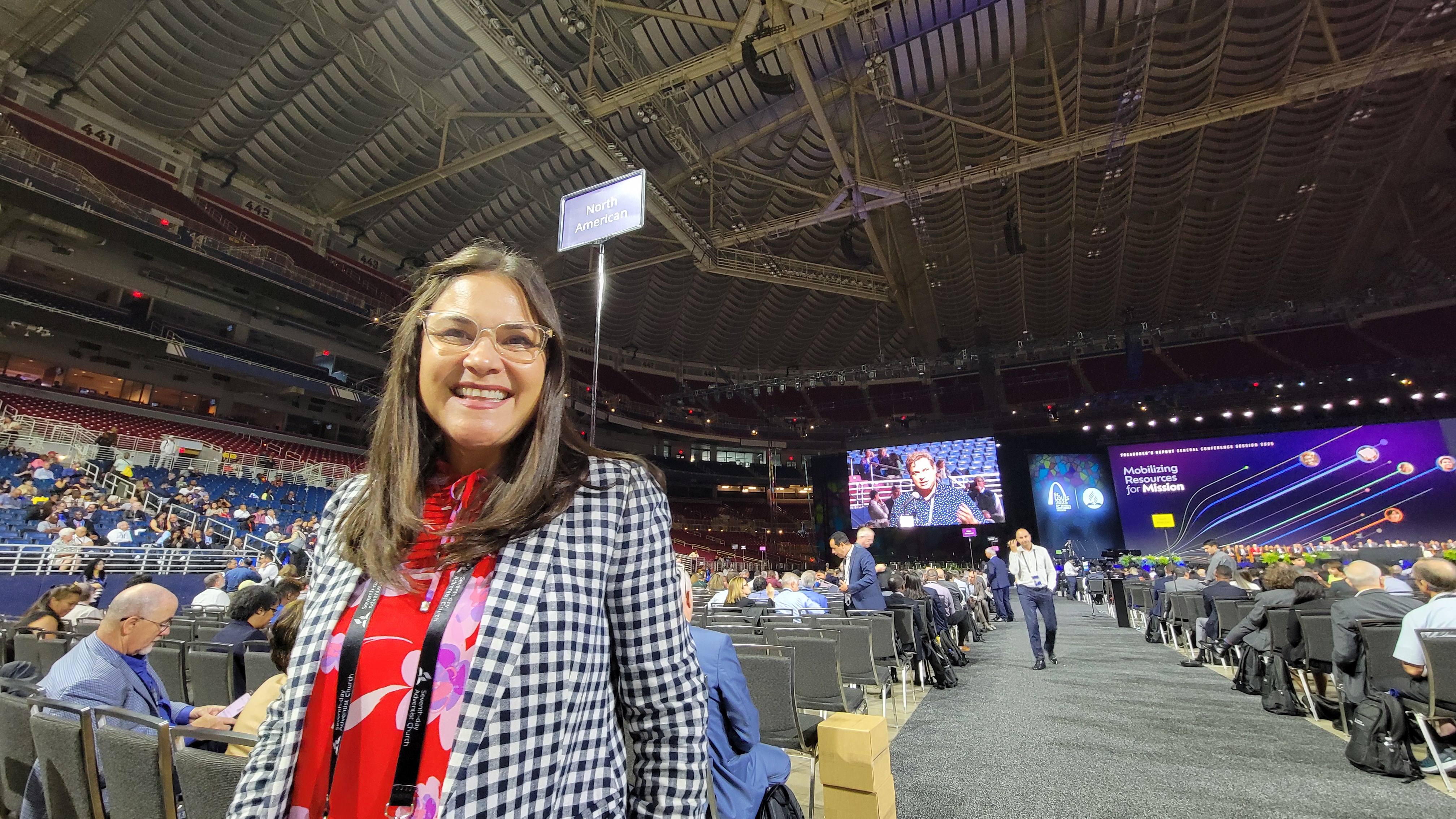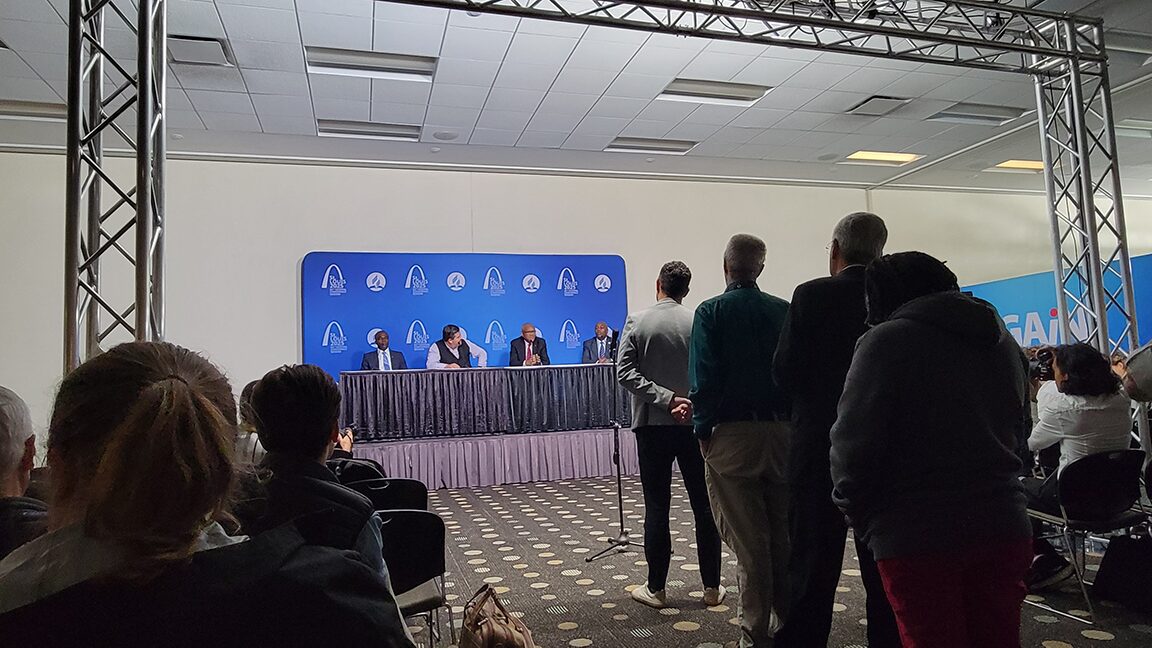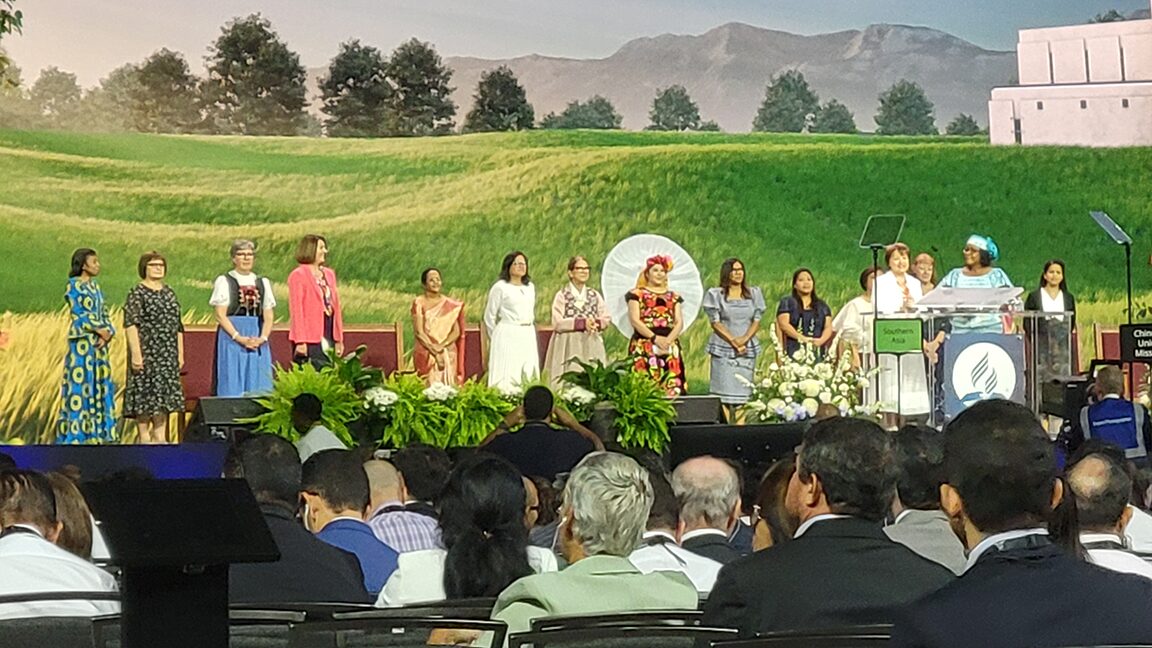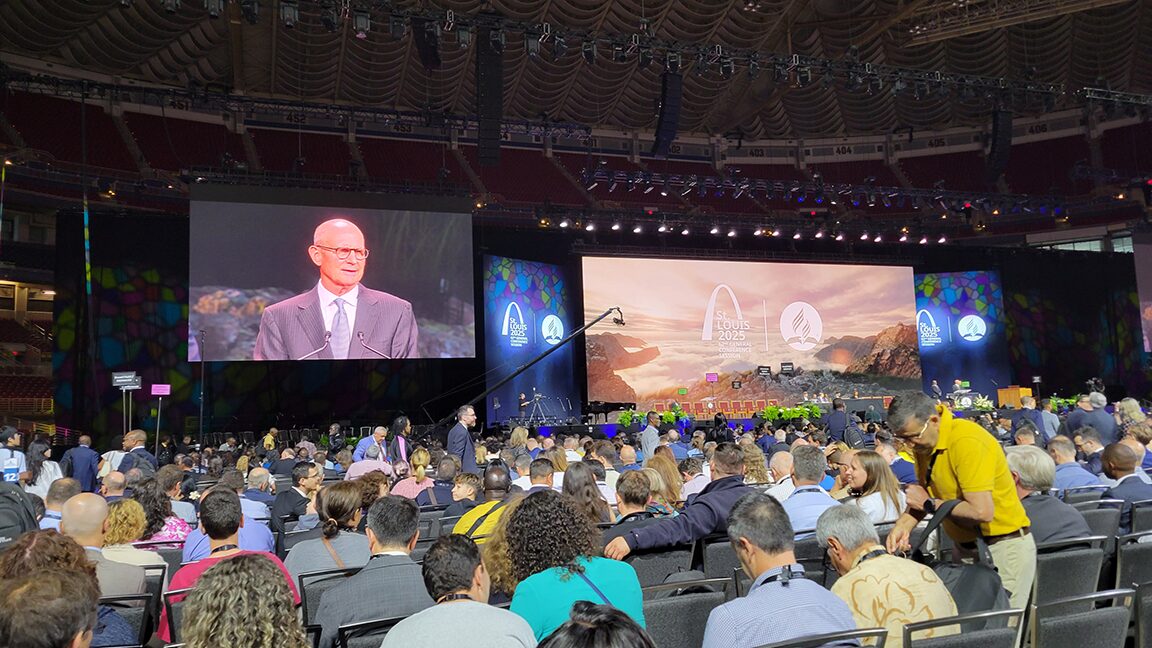GC Session News
Jesus is Coming, I Will Go!
July 3-12 | St. Louis, Missouri

COMMENTARY: OVERWHELMED AND EMPOWERED – A NEW DELEGATE’S EXPERIENCE
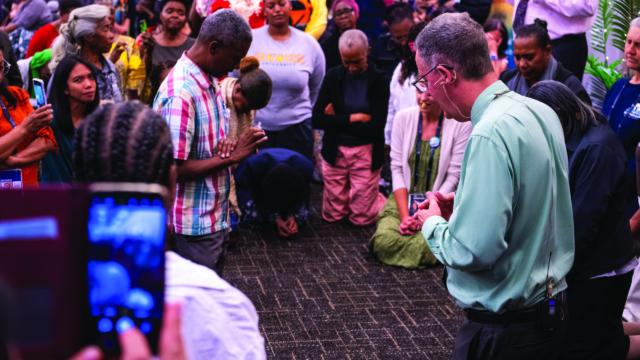
THE REAL CENTER OF POWER
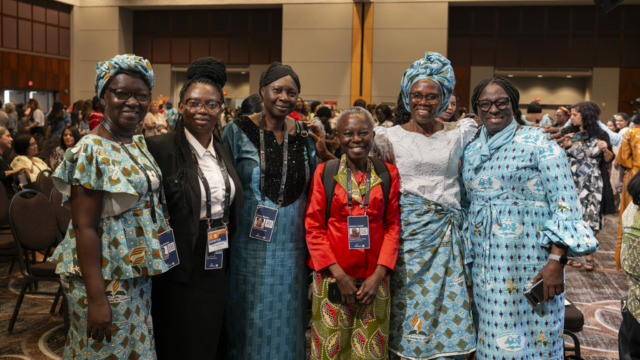
EQUIPPED TO SERVE, EMPOWERED TO LEAD
Beth Thomas – St. Louis, Missouri … Women from across the globe are gathering in St.…
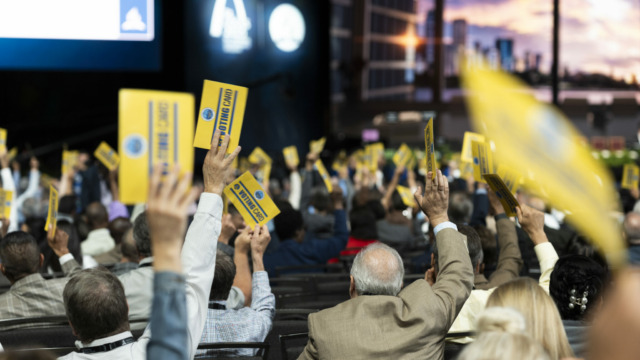
DELEGATES VOTE CHURCH MANUAL, BYLAWS AND CONSTITUTION ITEMS
Marcos Paseggi – St. Louis, Missouri … The fifth, sixth, and seventh business meetings during the…
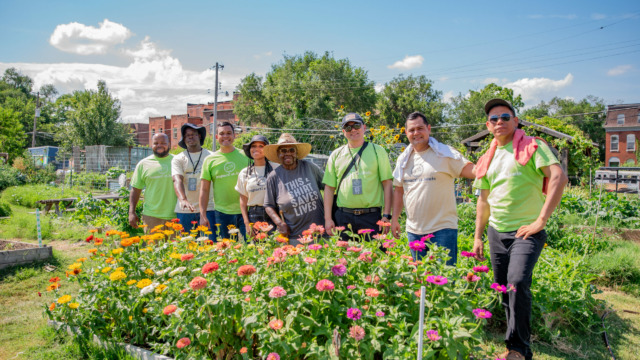
YOUTH ON A MISSION: GC SESSION VOLUNTEERS IMPACT ST. LOUIS
Beth Thomas – St. Louis, Missouri … Many eyes are fixed on the business sessions and…
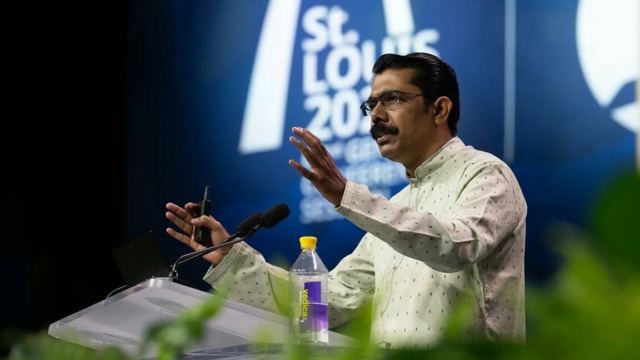
DISCIPLE-MAKING STORIES HIGHLIGHTED AT GC SESSION DAY 5 EVENING WORSHIP
Lauren Davis – St. Louis, Missouri … Day Five of the 62nd General Conference (GC) Session…
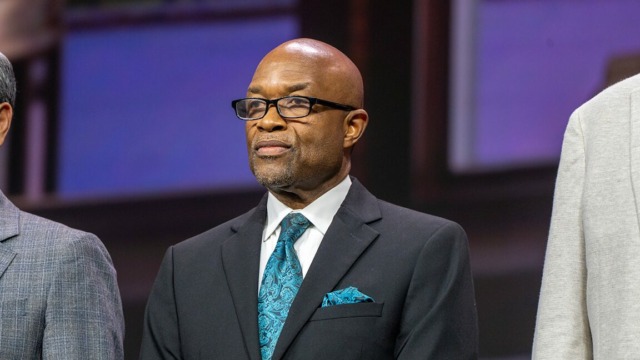
G. Alexander Bryant Elected as President of the Seventh-day Adventist Church in North America

RECAP: THE THIRD FULL DAY OF THE 2025 GENERAL CONFERENCE
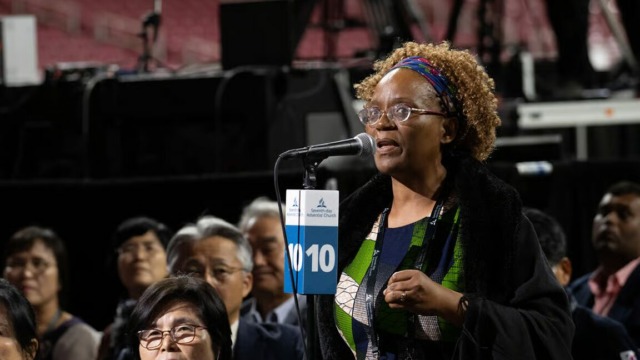
WOMEN DELEGATES AT GC SESSION HELP SHAPE THE FUTURE OF THE CHURCH
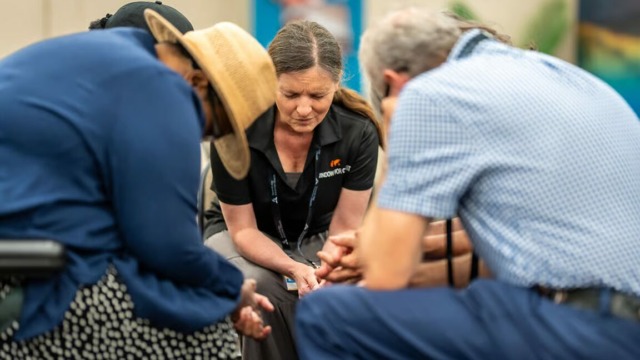
PASTORS FOR PASTORS: CHAPLAINCY DURING THE 2025 GC SESSION
Andreea Epistatu – St. Louis, Missouri … During the General Conference Session, emotions run deep. Leaders…
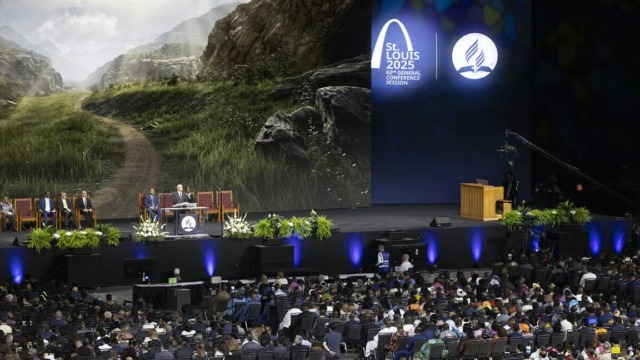
Recap: The Second Full Day of the 2025 GC Session
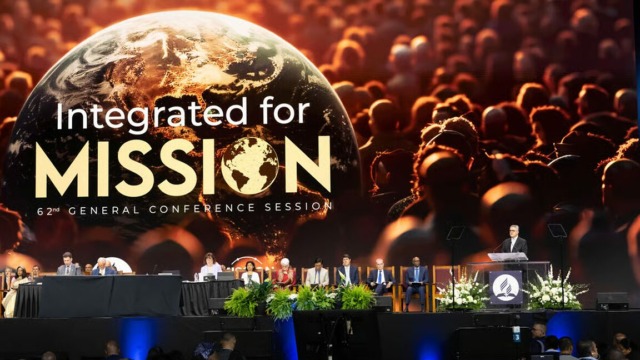
ADVENTIST SECRETARY’S REPORT EMPHASIZES GLOBAL MISSION AMID RISING SECULARIZATION
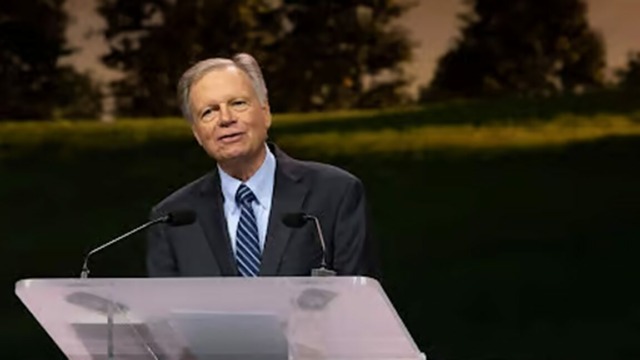
ADVENTIST SPEAKER MARK FINLEY ENCOURAGES TOTAL MEMBER INVOLVEMENT
Lauren Davis – St. Louis, Missouri … The first official evening worship of the 62nd General…

RECAP: THE FIRST FULL DAY OF THE 2025 GC SESSION
Angelica Sanchez – St. Louis, Missouri … On July 4, 2025, the first full day of…
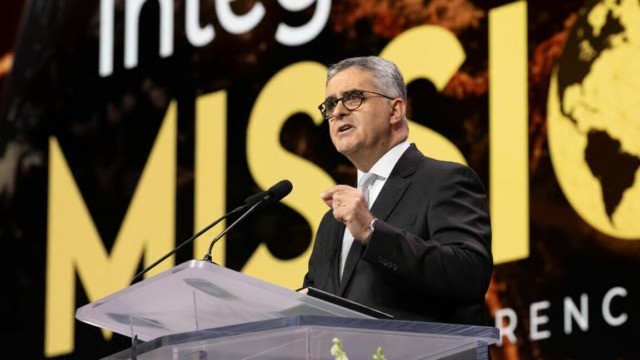
ERTON C. KÖHLER ELECTED AS PRESIDENT OF THE SEVENTH-DAY ADVENTIST WORLD CHURCH
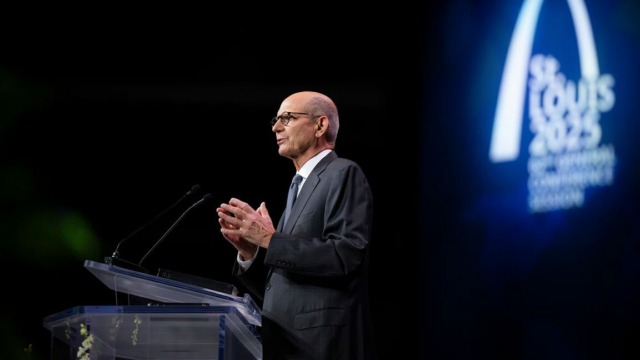
GENERAL CONFERENCE PRESIDENT TED WILSON ISSUES CORRECTIVE STATEMENT ON IMMUNIZATION REMARKS
Lauren Davis – St. Louis, Missouri … General Conference president Ted Wilson issued a corrective statement…
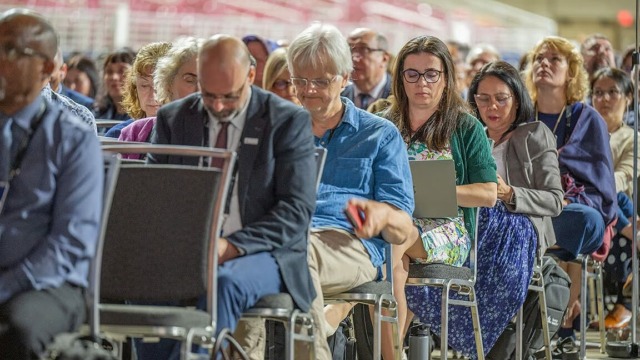
DELEGATES VOTE AGAINST AMENDMENT TO DISCUSS 2015 STATEMENT ON IMMUNIZATION
Lauren Davis – St. Louis, Missouri … During the afternoon business session on July 3, 2025,…

HOW YOUR VOICE IS REPRESENTED AT THE GENERAL CONFERENCE SESSION
Hugh Davis – Lincoln, Nebraska … Every five years, Seventh-day Adventists from all over the world…
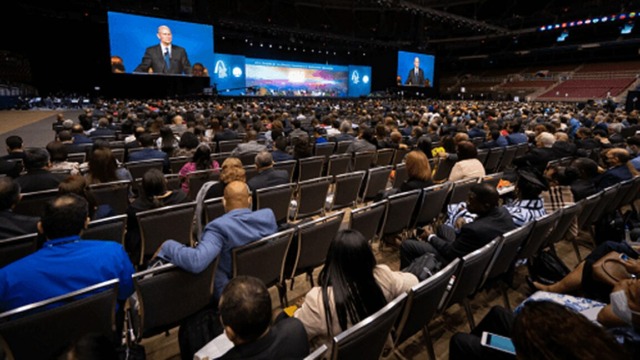
OPINION: IS THE GC SESSION WE HOLD EVERY FIVE YEARS WORTH THE TIME AND MONEY?
By Gary Thurber I get asked that question quite often, especially in the weeks before the…

THE GENERAL CONFERENCE SESSION: WHY? HOW? WHEN? WHERE?
Thomas L. Lemon – Silver Spring, Maryland … When Rachel Preston remonstrated with Frederick Wheeler over…

SEVENTH-DAY ADVENTIST CHURCH PREPARES FOR 62ND GENERAL CONFERENCE SESSION IN ST. LOUIS
Experience the GC Session Online
Interview with the New GC President
How a Session Really Works
Press Release: July 3, 2025
Press Release: July 4, 2025
Press Release: July 6, 2025
Press Release: July 7, 2025
Press Release: July 8, 2025
Press Release: July 9, 2025
Press Release: July 10, 2025
Press Release: July 11, 2025
GC Session 2025 Special Report: July 3, 2025
GC Session 2025 Special Report: July 4, 2025
GC Session 2025 Special Report: July 5, 2025
GC Session 2025 Special Report: July 6, 2025
GC Session 2025 Special Report: July 7, 2025
GC Session 2025 Special Report: July 8, 2025
GC Session 2025 Special Report: July 9, 2025
GC Session 2025 Special Report: July 10, 2025
The History of the GC Session
The General Conference Session (GC Session) is the highest governing body of the Seventh-day Adventist Church. Convened every five years, except in rare and extraordinary circumstances, this global gathering brings together thousands of delegates, church leaders, and members to worship, elect leadership, vote on policy, and seek God’s guidance for the Church’s future. It is more than a meeting; it is a spiritual milestone and a powerful expression of global Adventist identity.
The story begins in 1863 in Battle Creek, Michigan. Just 20 delegates representing six conferences joined to organize the Seventh-day Adventist Church officially. From that humble beginning, the session has grown into one of the largest religious events in the world. As the Church expanded, the influence and impact of each session also increased.
A pivotal session occurred in 1888 in Minneapolis, Minnesota, when a theological debate on righteousness by faith redefined the Church’s understanding of grace. Led by E.J. Waggoner and A.T. Jones, and supported by Ellen G. White, the session stirred hearts and minds, anchoring Adventist theology more firmly in the person of Jesus Christ.
In 1901, back in Battle Creek, delegates made sweeping changes to how the Church operated. Delegates voted for a new decentralized structure that introduced union conferences. This shift empowered regional fields while maintaining global unity. Two years later, in 1903, the Church headquarters officially moved to Washington, D.C., signaling the Church’s readiness for a worldwide mission.
As the decades passed, GC Session continued to shape the Church. In 1950, doctrinal discussions in San Francisco sharpened theological focus. In 1980, the Dallas session led to the adoption of the 27 Fundamental Beliefs, a defining statement of faith for the global body. This list was expanded to 28 beliefs in 2005 in St. Louis.
The global nature of Adventism became increasingly visible. Vienna hosted the session in 1975, the first outside North America since 1905. Utrecht followed in 1995, and Toronto in 2000. That year also saw the unveiling of “The King is Coming,” a sculpture by Victor Issa that visually captured the Church’s international character, with ten life-size figures representing each inhabited continent looking toward Christ.
Choosing a location for the General Conference Session is a significant and complex decision. While spiritual priorities guide the event’s purpose, practical considerations shape its place. The General Conference Administrative Committee reviews potential host cities based on several factors, including venue capacity, international accessibility, cost, safety, and the ability to accommodate thousands of delegates and visitors. Locations must also support the extensive logistical needs of media, translation services, security, and global communication.
The 2010 Session in Atlanta brought new leadership with Ted N.C. Wilson elected General Conference President. His presidency has emphasized revival, reformation, and mission, themes that continue to shape the Church’s direction.
The COVID-19 pandemic brought unprecedented disruption. The 2020 Session in Indianapolis was postponed, marking the first rescheduling of a session due to a global crisis. In response, a special one-day session was held in January 2022 to amend the Church’s constitution and allow hybrid participation. Two years after its scheduled time, the GC Session finally occurred in June 2022 in St. Louis, where live streaming and remote voting reflected the Church’s innovation and resilience.
From 1863 to today, the General Conference Session has served as a mirror of the Church’s journey, reflecting its challenges, breakthroughs, and unshakable commitment to mission. Through every gathering, the heart of the session remains the same, seeking God’s will together as one global family.
